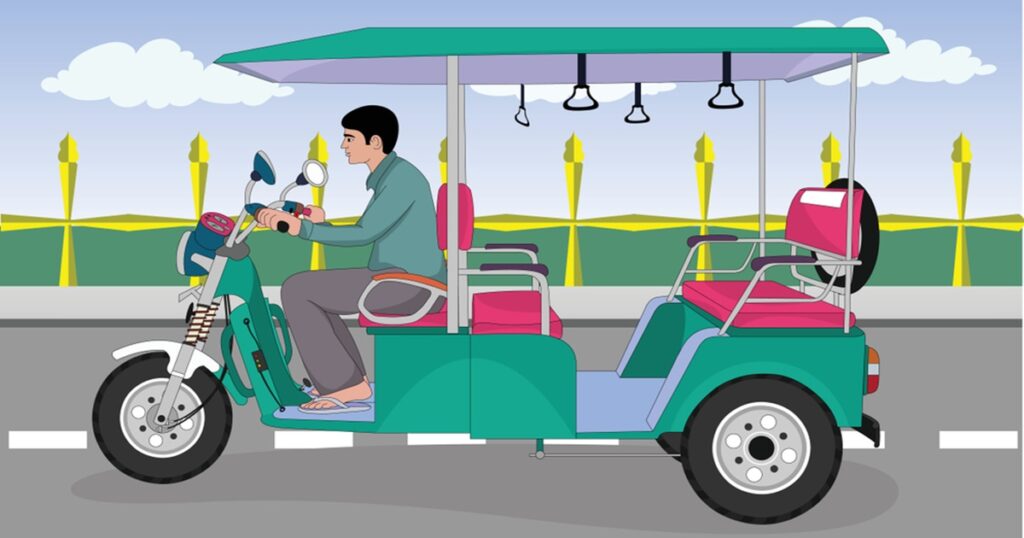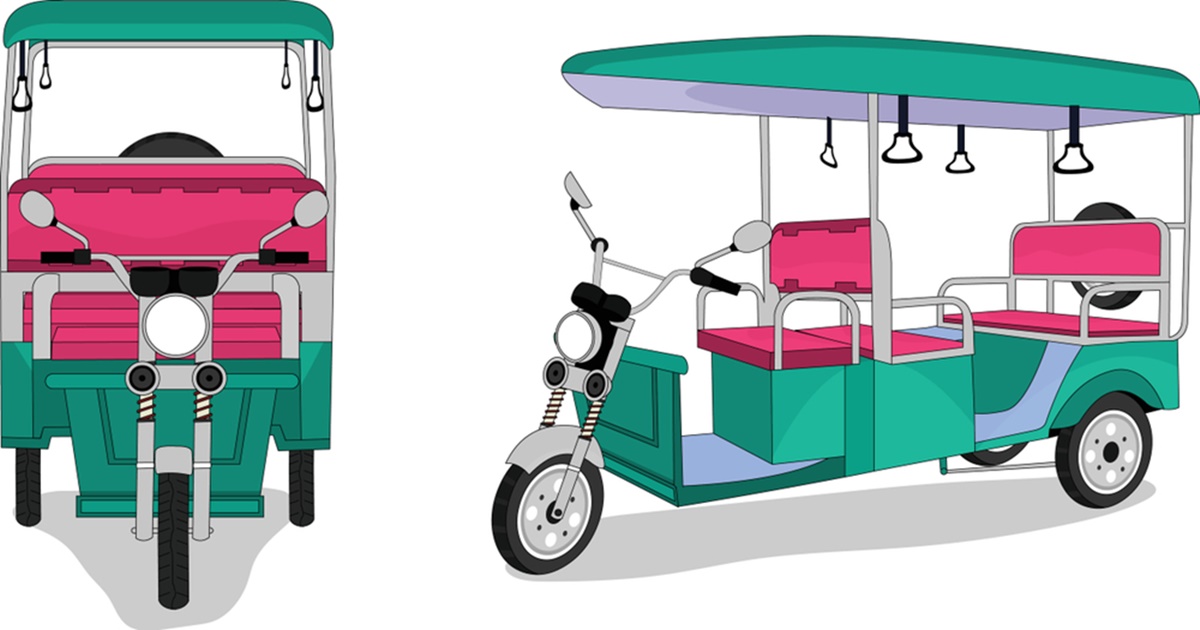In today’s India, E-Rickshaws present a viable business opportunity due to the minimal investment and assured profit involved. They are simple to operate, have cheap operating costs, and give significant profits in a short period of time.
There are several variations available now, the majority of which originated as cheap imports from China. Indian e-rickshaws have recently been developed, giving greater services and improved quality at a comparable price.
Since the cost of battery charging is far less than that of any other fuel, e-rickshaws can generate a respectable income. Additionally, new materials like fibreglass have been incorporated into them since they offer higher strengths, longer durability, and lighter weight than metals.
Major Components and Parts of an E-Rickshaw
1. Electric Motor: A 650–1400W, 48V (Input), Brushless Direct Current (BLDC) type motor is employed. An electronic controller is used to control it.
2. Digital Motor Control: The controller has a manual or automatic switch that controls the motor’s on/off, forward or backward motion, speed selection and regulation, torque selection and regulation, and overload protection. The controller supplies input to the motor, lamp, AC/DC converter, and speedometer/indicator through a connection to the battery pack.
3. Battery: Since 48V is needed, a set of four 12V deep cycle lead acid/Li-ion batteries are employed. The controller unit is connected to these batteries in series.
4. Differential: The rear wheels and electric motor of E-Rickshaws are connected with a differential.
5. Helical springs with dampers and hydraulic telescopic shock absorbers are employed as the front shock absorbers.
6. Rear Suspension: Rear shocker and leaf spring carriage spring
7. Brakes: Drum brakes with internal actuators and expanding shoe type are employed. The rear wheels will be stopped by the brakes because they are mounted on the chassis (Pedal brakes).
8. Speedometer/Indicator: The majority of speedometers use analogue dials. The one on the right side represents the battery charge level, while the one on the left side indicates vehicle speed. It is linked to the control panel. Steering is done via a handle bar.
9. Miscellaneous parts: Ignition, rear light, front glass, front indicator, centre locking, alloy wheel, and front indicator, left-right switch, converter, switch, tyre, wiring, throttle set, etc.
Profits Associated with an E-Rickshaw
1. The E-Rickshaw takes roughly 8 to 10 hours to fully charge, and each charge uses about 5 to 6 units of electricity or KWh.
2. It has a range of 90 km and more with full charge, costing Rs. 2-3 per km.
3. Usually in cities, the ticket is Rs. 10 -20 per passenger for a 2 km trip.
4. Maintenance cost is very low except the need to replace batteries.

The E-Rickshaw ranks first in terms of cost and mileage when compared to other fuel powered vehicles in semi urban areas. Thus, it is considered one of the most effective modes of transportation at the moment. The only recurring cost involved in E-Rickshaw is the need to change the set of batteries every few months. And to ensure cost optimisation and good quality, it is crucial to purchase batteries from Leading Battery Manufacturers.
Select is one of the reputed Battery Suppliers and Manufacturers in India that provides exceptionally durable and highly reliable E-Rickshaw batteries at reasonable prices.
